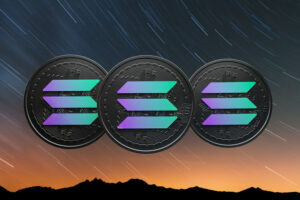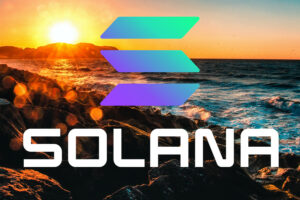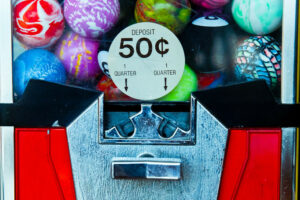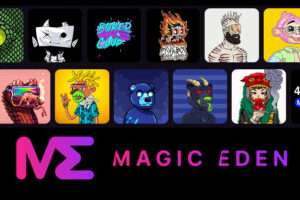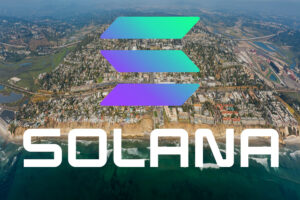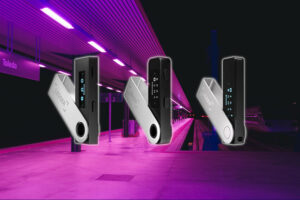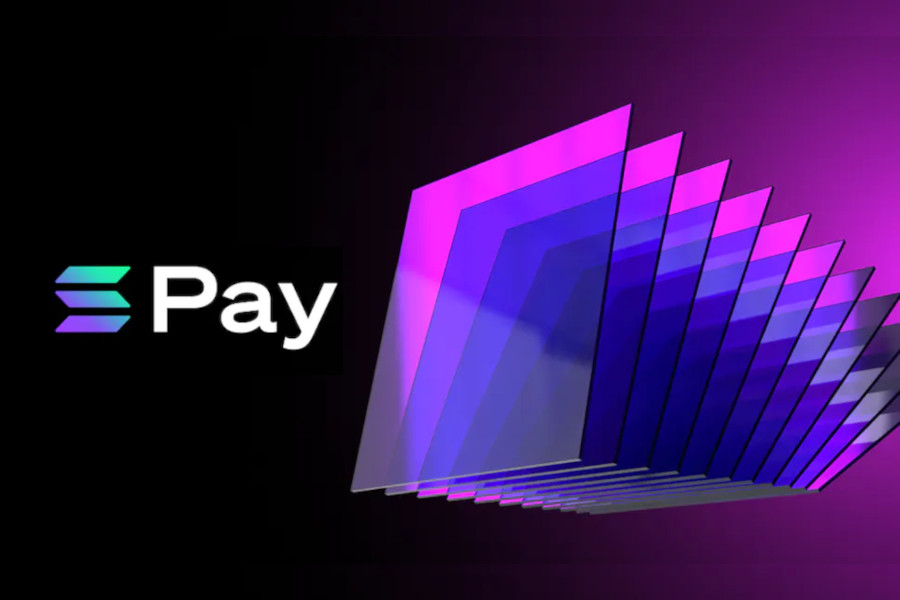
What Is Solana Pay?
Solana Pay is a new, open, and free-to-use payments framework built on Solana — the world’s most performant web3 ecosystem. Solana Pay was announced in early 2022. Solana Pay is built for immediate transactions and it is meant to compete directly with traditional payment processors like Visa, Mastercard, and American Express.
Traditional payment processors are expensive and exercise monopolistic control over payments. Payment processors are able to extract 3-5% of each transaction as a fee. Payment processor fees are meaningful for small businesses who might operate with a 5-10% overall profit margin.
Solana Pay offers small and medium sized businesses the opportunity to reduce their payment processor fees. For example, a small business with a 5% profit margin could increase their profit margin to 8% by removing a 3% payment processor fee. The increase in profit is ~60%, which is meaningful.
Demand for blockchain digital payment such as Solana Pay is high. A recent study by Visa found that 73% of small businesses surveyed said accepting digital payments is fundamental to growth in 2022. Approximately 59% said they already are, or plan to, use only digital payments within the next two years.
Source: Visa
Solana Pay creates the building blocks for direct merchant-to-consumer relationships that are truly peer-to-peer and operate on a decentralized network. Merchants are able to connect directly with consumers and clear payments in seconds for low fees. Also, merchants can unlock new promotional opportunities like sending reward tokens or NFTs, enhanced loyalty programs based on activities on-chain, and other targeted offers based on quick and direct interactions.
The growing industry of blockchain payments is developing quickly. The launch of Solana Pay means merchants and consumers will now have an option to integrate blockchain technology into their daily commerce. Businesses now have the opportunity to increase their profit margins and improve their access to capital by reducing the payment clearing time.
Advantages Of Solana Pay
Solana Pay has many advantages over traditional payments rails:
- Fast: Settle your transactions immediately with Solana Pay. Solana can process up to 60,000 transactions per second — and has been called the potential “Visa of the digital asset ecosystem”
- Direct: Avoid intermediaries and their high fees. Solana Pay is the first open, direct merchant-to-consumer payment rail.
- Easy: Your dev can set up the Solana Pay SDK in minutes, so you can start doing business with the millions who hold USDC or other Solana-based stablecoins.
- Energy Efficient: Solana Pay transactions use the same energy as about two Google searches, and the entire network is carbon neutral.
Solana Pay is compatible with Solana SOL and all SPL tokens. Circle worked together with the team at Solana Labs to develop Solana Pay. Circle’s USDC stablecoin can be used with Solana Pay.
“Circle is thrilled to be working with Solana to simplify and adapt USDC payments for consumer-facing businesses. The launch of Solana Pay is a critical step toward broadening access and usage for merchants and customers who want a faster, more efficient payment option for everyday commerce.”
– Jeremy Allaire, Co-founder, Chairman, and CEO of Circle (source)
How Much Does Solana Pay Cost?
Solana Pay transactions cost the same amount as any other Solana transaction – 0.000005 SOL, which is a fraction of one penny.
How To Use Solana Pay
Solana Pay is available to anyone who uses Solana. Solana Pay is a protocol to send and receive payments. There is not a centralized authority or clearing agent who controls payments.
Solana Pay uses a QR code to generate payment transaction instructions. A merchant can add Solana Pay QR codes on their website, mobile app, or at the point-of-sale terminal.
Avana Wallet has Solana Pay fully integrated into our Solana Wallet mobile app and browser extension. When you use Avana Wallet, you can send and receive Solana Pay payments in seconds.
Creating A Solana Pay Invoice With Avana Wallet
Step 1: Fill in information and create the Solana Pay invoice. Select the currency (Solana SOL or USDC) and amount.
Step 2: Check invoice status. The invoice will show a green checkmark when it is paid. Avana Wallet monitors the invoice status realtime.
Step 3: Verify invoice information.
Avana Wallet enables you to send and receive links for Solana Pay transactions. For example, you can create a Solana Pay invoice and send the payer a link the QR code hosted on Avana Wallet’s website. The link contains the invoice details and a custom QR code that the payer can scan and complete the payment.
The Solana Pay invoice will show the transaction details after it has been paid.
Avana Wallet’s mobile app works seamlessly with Solana Pay. You can scan Solana Pay QR code and make a payment in a matter of seconds.
How Does A Solana Pay QR Code Work?
Solana Pay QR codes store a URL that contains the information needed to process a Solana Pay transaction. A Solana Pay QR code might look something like this: solana:czwkafFYmZ4mBsWW5BjfJ2wRjmZpRkdKSTqvmwr58HY?reference=7qB4d3pamVpnGceJxGQFGctK2J3BcnzWNQdZd5GCbQTJ&amount=2&spl-token=EPjFWdd5AufqSSqeM2qN1xzybapC8G4wEGGkZwyTDt1v&label=Payment. The URL instructs the payer to send $2 USDC to Solana wallet address czwkafFYmZ4mBsWW5BjfJ2wRjmZpRkdKSTqvmwr58HY. The payment uses a reference id of 7qB4d3pamVpnGceJxGQFGctK2J3BcnzWNQdZd5GCbQTJ, which is similar to a unique transaction id on receipts.
A sample Solana Pay QR code generate with Avana Wallet looks similar to this:
Solana Pay Outlook
The outlook is bright for Solana Pay. Avana Wallet, Phantom, Glow, and Solflare have all integrated Solana Pay into their native Solana wallet apps. Many developers are working on Solana Pay applications to help onboard more merchants and consumers.
Solana’s fast and cheap blockchain is highly performant and capable of handling a large global payments system. Visa’s network processes about 2,500-3,000 transactions per second during peak times. Solana is capable of handling over 60,000 transactions per second, which means it can handle all of Visa’s volume.
Resources
Solana Pay developer docs
Solana Discord
Solana Forums
Visa Study on Digital Payments
[embedded content]
- SEO Powered Content & PR Distribution. Get Amplified Today.
- Platoblockchain. Web3 Metaverse Intelligence. Knowledge Amplified. Access Here.
- Source: https://www.avanawallet.com/blog/guide-to-solana-pay-a-blockchain-digital-payments-framework-bb620afc/
- :is
- $UP
- 000
- 1
- 2022
- a
- Able
- About
- access
- activities
- adapt
- address
- advantages
- After
- Agent
- All
- already
- American
- American Express
- amount
- and
- anyone
- app
- applications
- approximately
- apps
- ARE
- AS
- asset
- At
- authority
- available
- based
- BE
- blockchain
- blockchain technology
- Blocks
- Bright
- browser
- Building
- built
- business
- businesses
- by
- called
- CAN
- capable
- capital
- carbon
- centralized
- ceo
- chairman
- cheap
- check
- Checkmark
- Circle
- clear
- Clearing
- Co-founder
- code
- COM
- Commerce
- compatible
- compete
- complete
- Connect
- Consumers
- contains
- content
- control
- controls
- Cost
- could
- create
- creates
- Creating
- critical
- Currency
- custom
- Customers
- daily
- decentralized
- decentralized network
- Demand
- details
- Dev
- develop
- Developer
- developers
- developing
- digital
- Digital Asset
- Digital Payment
- Digital Payments
- direct
- directly
- doing
- during
- each
- Early
- ecosystem
- efficient
- embedded
- enables
- energy
- enhanced
- Entire
- Ether (ETH)
- everyday
- example
- Exercise
- expensive
- express
- extension
- extract
- FAST
- faster
- fee
- Fees
- fill
- First
- For
- found
- fraction
- Framework
- fully
- fundamental
- generate
- Global
- Global Payments
- Green
- Growing
- Growth
- guide
- handle
- Handling
- Have
- help
- High
- highly
- hold
- hosted
- How
- How To
- HTML
- HTTPS
- ID
- immediate
- immediately
- improve
- in
- Increase
- industry
- information
- instructions
- integrate
- integrated
- interactions
- intermediaries
- IT
- Jeremy Allaire
- jpg
- Labs
- large
- launch
- like
- LINK
- links
- Look
- LOOKS
- Low
- low fees
- Loyalty
- Loyalty programs
- make
- many
- Margin
- margins
- mastercard
- Matter
- meaningful
- means
- medium
- Merchant
- Merchants
- might
- millions
- minutes
- Mobile
- Mobile app
- monitors
- more
- more efficient
- most
- native
- needed
- network
- Neutral
- New
- next
- NFTs
- of
- Offers
- on
- On-Chain
- Onboard
- ONE
- open
- operate
- opportunities
- Opportunity
- Option
- Other
- Outlook
- overall
- paid
- Pay
- payment
- payment processor
- payments
- payments system
- Peak
- peer to peer
- phantom
- plan
- plato
- Plato Data Intelligence
- PlatoData
- player
- potential
- process
- processes
- Processor
- processors
- Profit
- Programs
- promotional
- protocol
- QR code
- qr-codes
- Quick
- quickly
- Rail
- rails
- realtime
- receipts
- receive
- recent
- reduce
- reducing
- Relationships
- removing
- Resources
- Reward
- s
- Said
- same
- scan
- sdk
- seamlessly
- Second
- seconds
- sending
- set
- settle
- show
- similar
- simplify
- small
- small business
- small businesses
- So
- SOL
- Solana
- solana labs
- solana pay
- Solana wallet
- Solflare
- something
- Source
- stablecoin
- Stablecoins
- start
- Status
- Step
- store
- Study
- such
- surveyed
- system
- targeted
- team
- Technology
- Terminal
- that
- The
- the information
- their
- thrilled
- time
- times
- to
- together
- Tokens
- toward
- traditional
- transaction
- Transaction Details
- Transactions
- unique
- unlock
- URL
- Usage
- USDC
- use
- verify
- Video
- visa
- volume
- Wallet
- Web3
- Web3 Ecosystem
- Website
- What
- What is
- which
- WHO
- will
- with
- within
- Work
- worked
- working
- works
- world’s
- years
- Your
- youtube
- zephyrnet

